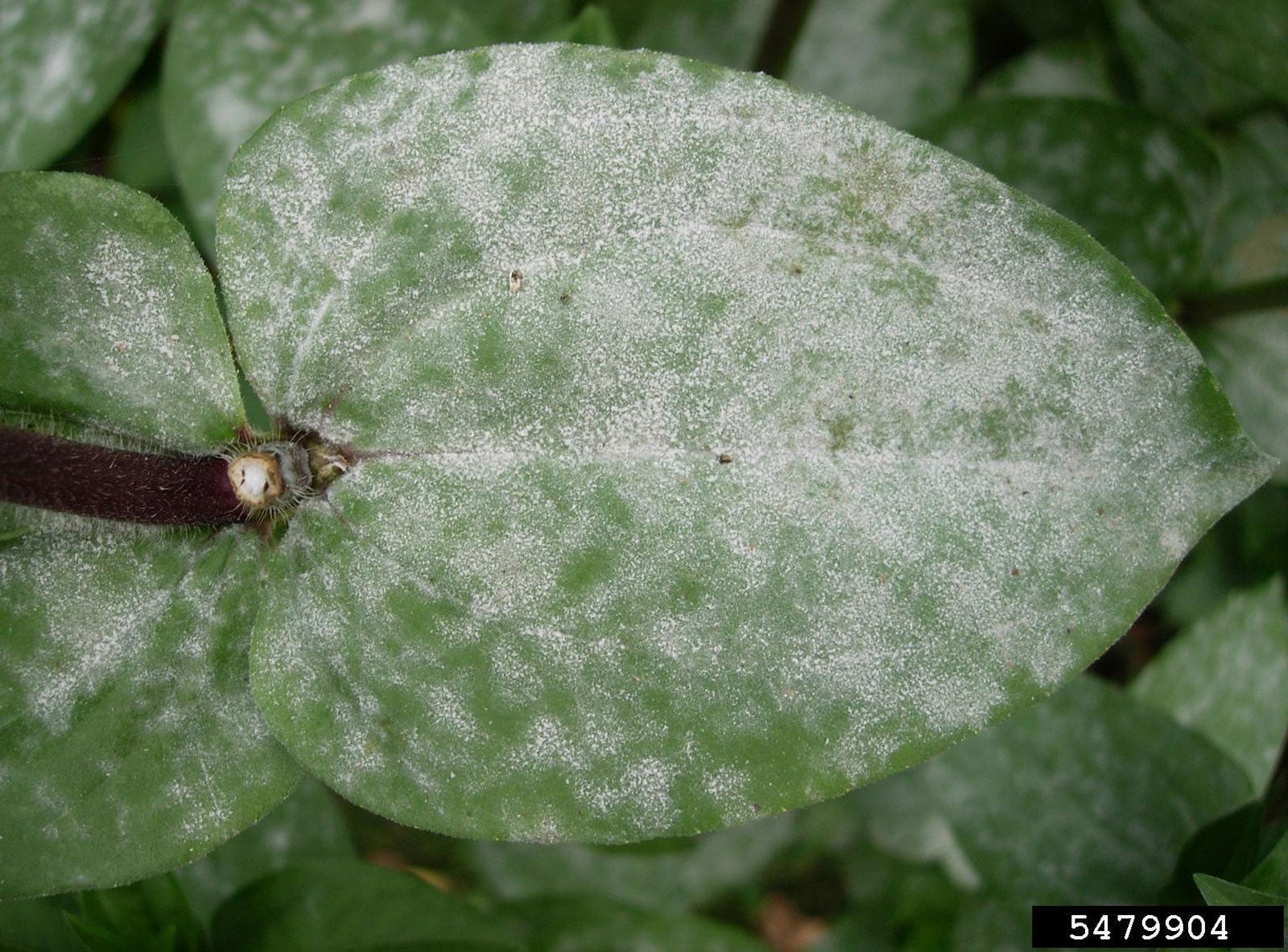Powdery Mildew Treatment Indoors: How To Get Rid Of Powdery Mildew On Houseplants


It's not talcum powder and it's not flour. That white chalky stuff on your plants is powdery mildew and it needs to be dealt with as the fungus spreads easily. Read on to learn how to get rid of powdery mildew on your indoor plants.
Powdery Mildew on Houseplants
Powdery mildew on houseplants is a fungal disease. Initially, it produces circular powdery white spots on the foliage of plants. As the disease spreads, the entire plant material can be affected with the fluffy white fungus. Over time parts of the plant will succumb to the disease and die. It is very contagious and, once one part is affected, it will infect the rest of the plant if not checked.
The fungus can affect plants outdoors, but indoor powdery mildew is more common due to conditions. The indoor powdery mildew requires temperatures around 70 degrees F. (21 C.). It occurs when there is poor air circulation, low light, and unlike outdoor powdery mildew, thrives in drier conditions.
The mycelium formed from the fungal spores is the source of the fluffy stuff on the plant parts. The spores spread in the air and when water splashes on plants. Powdery mildew control is essential in the home due to this aggressive, contagious state.
How to Get Rid of Powdery Mildew
The white substance rubs off easily with your fingers or a cloth. Don't mist plants. Prevent the foliage from getting wet when watering. Keep plants spaced to enhance air flow or use a small fan to circulate the air.
Once one plant shows signs of infection, isolate it to prevent the spread of the fungus. Pinch off the affected areas and discard. Common plants affected by indoor powdery mildew are:
If powdery mildew on houseplants is present on all specimens and cultural control is not effective, advance to chemical control. Powdery mildew treatment indoors may be achieved with common household ingredients.
Sign up for the Gardening Know How newsletter today and receive a free copy of our e-book "How to Grow Delicious Tomatoes".
Water the plants well from under the foliage, then apply a spray of 1 tablespoon (15 mL.) baking soda, 1/2 teaspoon (2.5 mL.) liquid soap, and 1 gallon (3.8 L.) of water. You may also add 1 tablespoon (15 mL.) of horticultural oil to help the mixture adhere to the fungus. Apply to the top and bottom of the foliage to get all the fungal areas. Using this powdery mildew control indoors is safe and non-toxic and effective on some, but not all, species of plants.
Another organic method to try is a milk spray. Use organic milk that is free of hormones and preservatives. Mix one part organic milk with nine parts water and spray once per week on all surfaces of the plant. Provide adequate ventilation while the spray dries on the foliage to prevent mold.
Fungicides for Powdery Mildew on Houseplants
When all else fails, use a household fungicide to kill the spores and prevent the spread of indoor powdery mildew. There is some risk of toxicity in any preparation you purchase so read the label carefully and apply as the product is intended. It's best to apply any fungicidal spray outside to prevent drift of the particles in your home.
The use of neem oil as a fungicide for powdery mildew on houseplants can also be used.

Bonnie Grant is a professional landscaper with a Certification in Urban Gardening. She has been gardening and writing for 15 years. A former professional chef, she has a passion for edible landscaping.